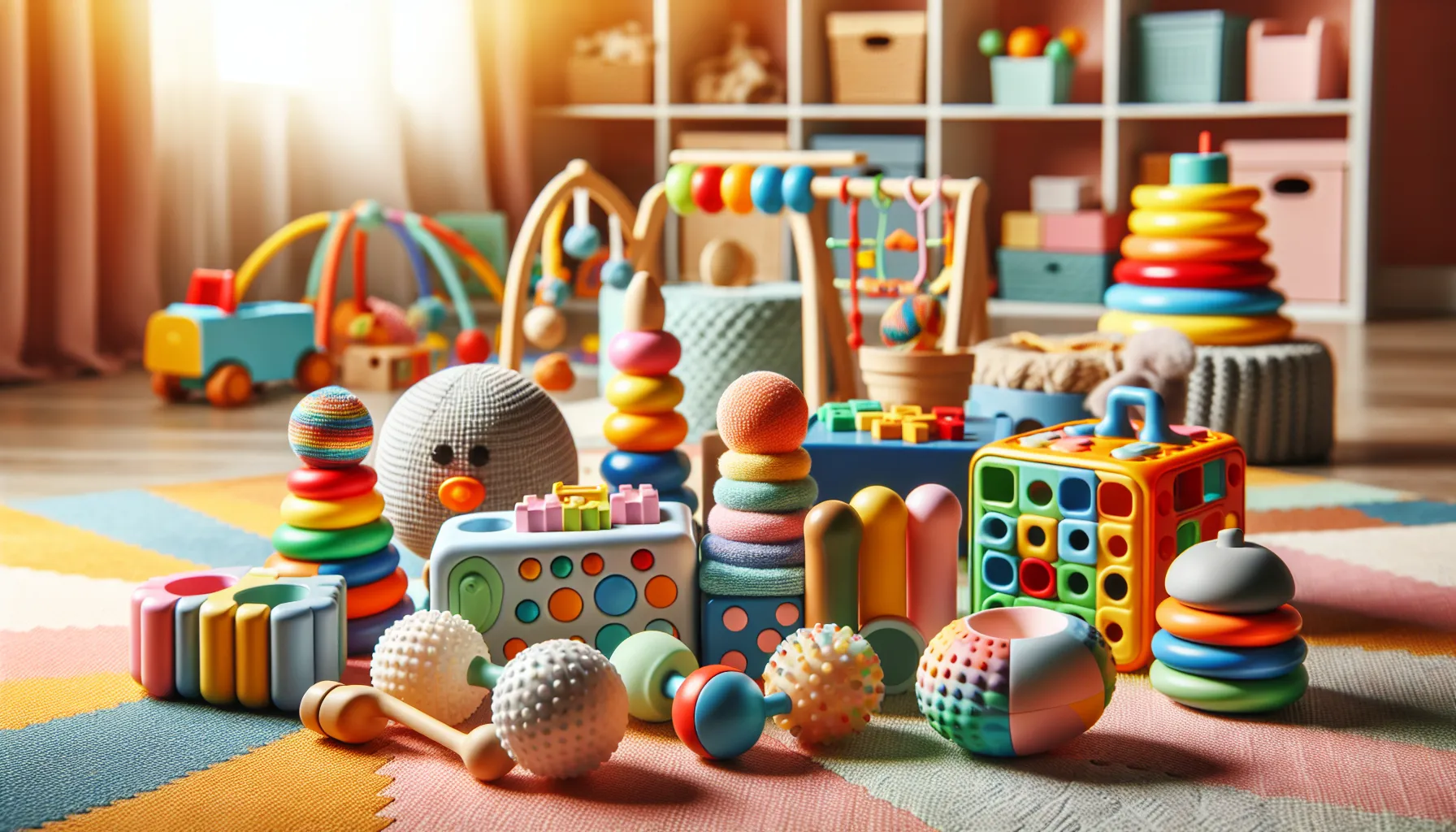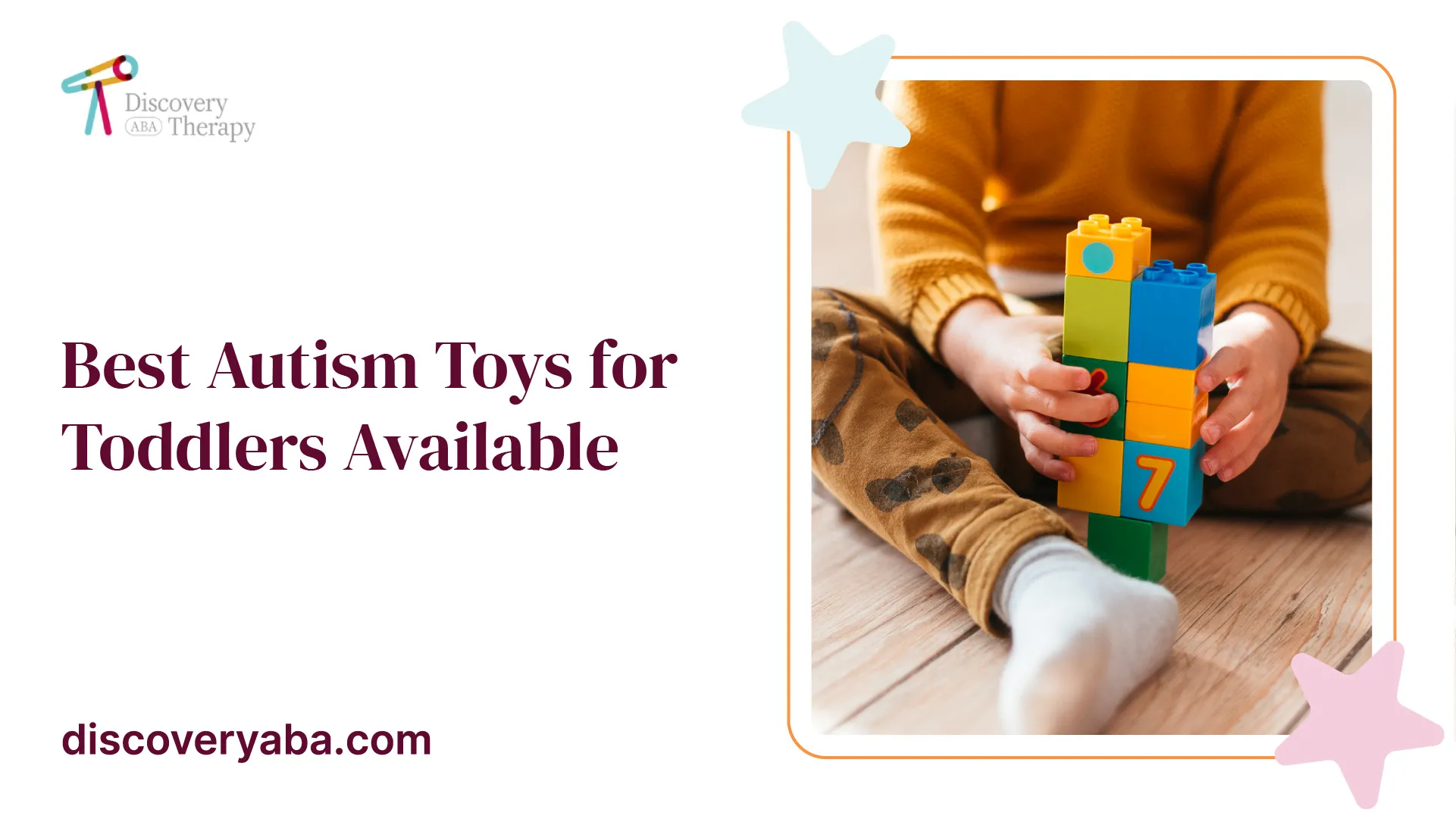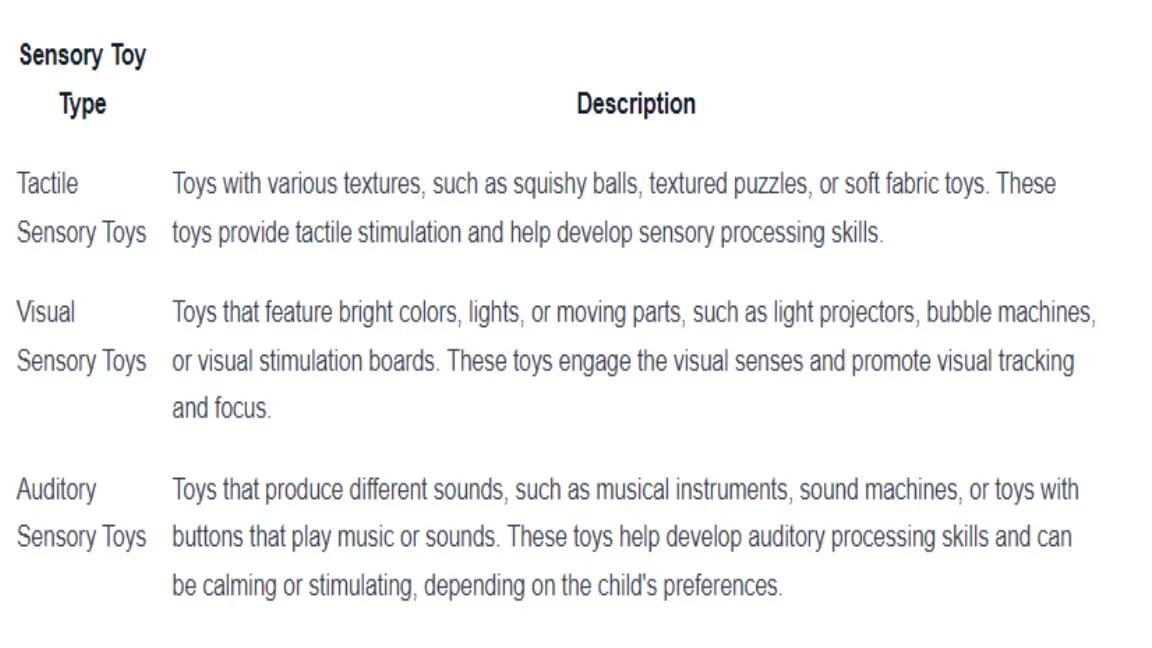Best Autism Toys for Toddlers Available
Discover the best autism toys for toddlers! Enhance playtime with inclusive and interactive options for sensory exploration.

Understanding Autism and Play
When it comes to toddlers with autism, play is not only a source of enjoyment but also a powerful tool for their development. Toys play a crucial role in stimulating various aspects of their growth, including sensory processing, social skills, and cognitive development. Understanding the importance of play for toddlers with autism and the benefits it offers can guide parents and caregivers in selecting the right toys for their children.
The Importance of Play for Toddlers with Autism
Play has a profound impact on the overall development of toddlers with autism. It serves as a means of communication, self-expression, and exploration. Engaging in play allows children with autism to enhance their social interaction, language skills, motor coordination, and problem-solving abilities.
Through play, toddlers with autism can learn to regulate their sensory experiences, as sensory sensitivities are common among individuals on the autism spectrum. Toys that provide a variety of textures, colors, sounds, and shapes can help them process sensory information more effectively and develop their sensory integration skills.

Benefits of Play for Children with Autism
The benefits of play for children with autism are vast. Here are some key advantages:
- Social Skills: Toys that encourage social interaction, turn-taking, sharing, and cooperative play are particularly beneficial for children with autism. These toys provide opportunities for them to learn and practice essential social skills, such as communication, sharing, and understanding social cues [1].
- Cognitive Development: Play can support cognitive development in toddlers with autism. Board games, such as Candy Land, Chutes and Ladders, Zingo, Guess Who?, and Sequence for Kids, can promote color recognition, counting, language development, problem-solving, and strategic thinking. These games engage children in cognitive challenges while fostering social interaction.
- Imaginative Play: Toys that encourage imaginative play, such as dress-up costumes, play kitchens, or action figures, can facilitate creativity, social skills, and language development in children with autism. Engaging in pretend play allows them to explore their imagination, express themselves, and engage in symbolic thinking [2].
- Sensory Regulation: Sensory toys, including fidget toys, squishy toys, or textured toys, can help children with autism regulate their sensory experiences. These toys provide sensory input and can assist in managing stress, anxiety, or sensory sensitivities [2].
Understanding the importance of play and its benefits for children with autism can guide parents and caregivers in selecting appropriate toys that cater to their child's individual needs and interests. By providing a supportive play environment and incorporating toys that promote sensory exploration, social interaction, cognitive development, and imaginative play, parents can help their toddlers with autism thrive and grow through the power of play.
Selecting Toys for Toddlers with Autism
When choosing toys for toddlers with autism, it's important to consider their unique needs and preferences. The right toys can provide valuable sensory experiences and promote developmental skills. In this section, we will explore considerations for selecting autism toys and discuss the benefits of sensory-friendly toys.
Considerations for Choosing Autism Toys
When selecting toys for toddlers with autism, there are several factors to keep in mind. Here are some considerations to guide your choices:
- Sensory Stimulation: Sensory toys for children with autism should have different textures, colors, sounds, and shapes to stimulate their senses and help them learn to process sensory information more effectively. Consider toys that engage multiple senses, such as toys with different textures, lights, or sounds.
- Safety: Safety is paramount when selecting toys for toddlers. Ensure that the toys are age-appropriate, free of small parts or choking hazards, and made from non-toxic materials. Look for toys that have been tested and meet safety standards.
- Interactivity and Engagement: Choose toys that encourage active engagement and interaction. Look for toys that prompt imaginative play, promote social interaction, or require problem-solving. Interactive toys can help toddlers with autism develop important social and cognitive skills.
- Individual Interests: Consider the interests and preferences of the toddler. Some children may have specific interests or obsessions, and incorporating toys related to those interests can enhance their engagement and enjoyment.
- Durability: Toddlers can be energetic and enthusiastic in their play. Select toys that are durable and can withstand rough handling.
Remember, every child with autism is unique, so it's essential to consider their individual needs and preferences when choosing toys.
Sensory-Friendly Toys for Autism
Sensory toys play a crucial role in the development and engagement of children with autism. These toys are designed to provide sensory input and help children with autism focus, calm down, and regulate their emotions. While sensory toys can be beneficial, it's important to note that they do not replace formal and evidence-based treatment for autism spectrum disorders. They are meant to supplement therapy and provide enjoyable sensory experiences.
Sensory toys can include a wide range of options, such as:
- Soft items like plush toys or sensory balls that provide tactile stimulation.
- Fidget toys that offer different textures, shapes, and movements to keep hands busy and help with focus.
- Items with various textures, such as textured boards or touch-and-feel books, to provide sensory input.
- Musical toys that produce different sounds and rhythms, promoting auditory stimulation and sensory exploration.
- Light-up toys that captivate attention and provide visual stimulation.
These sensory-friendly toys can help children with autism regulate their sensory experiences, manage stress or anxiety, and promote self-regulation. However, it's important to choose toys based on the individual needs and sensitivities of each child.
By considering the unique needs of toddlers with autism and selecting toys that provide sensory stimulation and engagement, you can create a supportive and enjoyable play environment that promotes their development and well-being. Remember to supervise playtime and actively participate in their play experiences to enhance their learning and enjoyment.
Sensory Toys for Toddlers with Autism
Sensory toys play a crucial role in the development and engagement of toddlers with autism. These toys are specifically designed to stimulate the senses of sight, sound, touch, smell, and taste, providing a safe and enjoyable environment for sensory exploration and learning through play [3]. While sensory toys can help children focus, calm down, and relax, it's important to note that they do not replace formal and evidence-based treatment for autism spectrum disorders. Let's explore three categories of sensory toys that are beneficial for toddlers with autism: tactile, visual, and auditory.
Tactile Sensory Toys
Tactile sensory toys focus on providing different textures and tactile experiences, allowing children to explore and engage their sense of touch. These toys can include squishy toys, fidget toys, textured balls, and sensory bins filled with materials like rice, sand, or water. Tactile sensory toys help children develop fine motor skills, improve hand-eye coordination, and regulate their sensory experiences.
Visual Sensory Toys
Visual sensory toys are designed to provide engaging and stimulating visual input for children with autism. These toys often feature bright colors, lights, and interesting visual patterns. Visual stimulation can help children focus and interact with their environment in a meaningful way. Examples of visual sensory toys include light-up toys, spinning toys, and toys with contrasting colors or moving parts [4].
Auditory Sensory Toys
Auditory sensory toys focus on engaging a child's sense of hearing. These toys can produce different sounds, music, or calming white noise. Auditory sensory toys help children explore and regulate their auditory experiences, enhancing their auditory processing skills and promoting relaxation. Examples of auditory sensory toys include musical instruments, sound machines, and toys that make soothing sounds or have buttons that produce different sounds when pressed.
By incorporating tactile, visual, and auditory sensory toys into playtime, toddlers with autism can benefit from the stimulating and calming effects of sensory input. It is important to observe and understand each child's individual sensory preferences and sensitivities to select the most appropriate toys for their specific needs. Additionally, supervision and guidance from parents and caregivers are crucial to ensure a safe and enjoyable play environment for toddlers with autism.
Interactive Toys for Toddlers with Autism
When selecting toys for toddlers with autism, it's important to consider interactive toys that promote engagement, social interaction, cognitive development, and imaginative play. These types of toys can help children with autism learn and develop essential skills in a fun and stimulating way.
Social Interaction Toys
Toys that encourage social interaction, such as turn-taking, sharing, and cooperative play, are beneficial for children with autism to help them learn essential social skills. Examples of social interaction toys include:
- Board games like Candy Land, Chutes and Ladders, Zingo, Guess Who?, and Sequence for Kids. These games promote cognitive development and social interaction in toddlers with autism by aiding in color recognition, counting, language development, problem-solving, and strategic thinking.
Cognitive Development Toys
Interactive toys that support cognitive development can be highly beneficial for toddlers with autism. These toys engage their minds and help them develop problem-solving skills, hand-eye coordination, and fine motor skills [2]. Examples of cognitive development toys include:
- Simple puzzles
- Shape sorters
- Building blocks
Imaginative Play Toys
Toys that encourage imaginative play are also valuable for toddlers with autism. These toys can support the development of creativity, social skills, and language abilities. Examples of imaginative play toys include:
- Dress-up costumes
- Play kitchens
- Action figures
Toys that promote pretend play and social interaction, such as dolls, action figures, or toy animals, can help children with autism develop social and communication skills. These toys can assist in teaching children with autism about emotions, conversations, and relationships in a fun and engaging way [5].
By providing toddlers with autism with interactive toys that cater to their specific needs, parents and caregivers can create an inclusive and engaging play environment that promotes learning, social interaction, and overall development.
Creating a Sensory-Friendly Playroom
For toddlers with autism, creating a sensory-friendly playroom at home can provide a safe and stimulating space where they can learn and grow through play. Designing a playroom that caters to their sensory needs can enhance their overall development and create a comfortable environment for exploration and engagement.
Designing a Safe and Stimulating Play Space
When designing a sensory-friendly playroom for toddlers with autism, it's important to consider both safety and stimulation. Here are some key factors to keep in mind:
- Safety: Ensure that the playroom is childproofed and free from any potential hazards. Cover electrical outlets, secure furniture to the wall, and use soft padding or rugs to cushion the play area.
- Lighting: Opt for natural lighting whenever possible, as it promotes a calm and welcoming atmosphere. If artificial lighting is necessary, choose soft and adjustable lighting options to avoid overwhelming the child.
- Colors: Use calming and neutral colors on the walls to create a soothing environment. Avoid overly bright or contrasting colors that might overstimulate the child.
- Organization: Keep the playroom organized with labeled storage bins and shelves. This helps children with autism understand where toys belong and provides a sense of order and routine.
Essential Elements for a Sensory-Friendly Playroom
To make the playroom truly sensory-friendly, incorporate some essential elements that cater to the unique needs of children with autism. These elements can include:
- Sensory Zones: Create designated areas within the playroom that focus on different sensory experiences. For example, a tactile zone with various textures, a visual zone with colorful and visually stimulating toys, and an auditory zone with toys that produce different sounds.
- Quiet Space: Dedicate a quiet corner or nook where the child can retreat to when they need a break from sensory stimulation. Provide cozy seating, soft lighting, and calming toys or books in this area.
- Flexible Seating: Include seating options that accommodate different sensory needs. Some children with autism may prefer bean bags, rocking chairs, or floor cushions. Having options allows them to choose what works best for them.
- Sensory Panels: Install sensory panels on the walls that feature different textures, mirrors, or interactive elements. These panels provide additional sensory input and encourage exploration and engagement.
Incorporating Sensory Toys in the Playroom
To make the sensory-friendly playroom complete, incorporate a variety of sensory toys that cater to different sensory needs and preferences. Consider the following types of sensory toys:

By incorporating sensory toys that cater to different sensory needs, you can create a playroom that supports the development of children with autism. Remember to observe and understand the individual preferences and sensitivities of the child when selecting toys, as each child's sensory needs may vary.
Resources for Autism Toys
Finding suitable toys for toddlers with autism can be a challenging task for parents and caregivers. However, there are several resources available that can assist in identifying and acquiring the right toys to support the unique needs of children with autism.
Autism Toy Collections from Toy Stores
Some toy stores recognize the importance of providing toys that are suitable for children with autism. For example, Hasbro offers tips on how parents can teach autistic children to play with toys like Mr. Potato Head or My Little Pony sets. Toy maker Melissa & Doug collaborates with stores to create special catalogs that cater to children with autism [6]. These collections often feature toys designed to engage children with autism while promoting learning and sensory exploration.
Specialized Autism Toy Retailers
In addition to mainstream toy stores, there are specialized autism toy retailers that offer a wide range of toys specifically designed for children with autism. These retailers understand the unique sensory and developmental needs of children on the autism spectrum and curate their inventory accordingly. They provide a selection of toys that focus on sensory stimulation, social interaction, and cognitive development. Shopping at these retailers can provide parents and caregivers with access to a variety of toys that are tailored to meet the specific needs of children with autism.
Recommendations from Autism Organizations
Autism organizations are valuable resources for parents and caregivers seeking guidance on selecting appropriate toys for children with autism. These organizations often provide recommendations and resources on their websites, offering insights into the types of toys that can support the developmental and sensory needs of children on the autism spectrum. By consulting these recommendations, parents can gain valuable insights into which toys are best suited for their child's unique preferences, interests, and developmental goals.
It's important to stay informed about local initiatives and events that cater to children with autism. Some toy stores and entertainment venues host special events, such as quiet hours or dedicated sensory-friendly experiences, to accommodate the needs of children with autism. For example, certain Toys R Us stores have implemented quiet hours, where music is turned off and lights are dimmed to create a more comfortable environment [6]. Similarly, Chuck E. Cheese's chain of restaurants has introduced sensory-friendly hours at select locations, with reduced sensory stimulation.
By leveraging these resources and staying connected to the autism community, parents and caregivers can access a wealth of information and support to help them find the best autism toys for toddlers. Remember, each child is unique, so it's important to consider their individual preferences, sensory needs, and developmental goals when selecting toys.
References
- https://www.crossrivertherapy.com/autism/autism-toys-for-toddlers
- https://raisingchildren.net.au/autism/school-play-work/play-learning/play-asd
- https://carmenbpingree.com/blog/best-sensory-toys-for-children-with-autism/
- https://www.autismspeaks.org/blog/what-sensory-toys
- https://www.statnews.com/2016/12/22/toys-autistic-kids/
Does Your Child Have An Autism Diagnosis?
Learn More About How ABA Therapy Can Help
Find More Articles
Contact us
North Carolina, Nevada, Utah, Virginia
New Hampshire, Maine
Arizona, Colorado, Georgia, New Mexico, Oklahoma, Texas
.avif)




































































































